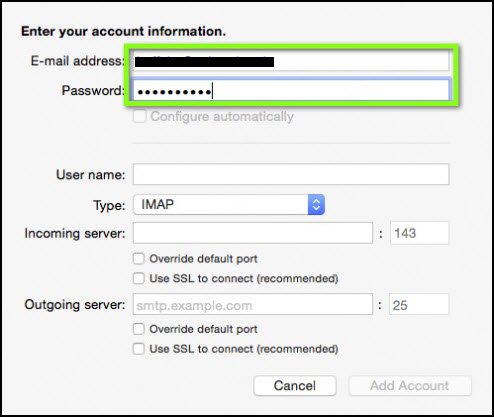In Outlook go to File > Open > Other User's Folder. In the Open Other User's Folder window, in the User box, type the email address of the folder's owner, or select the user from the address book. In the Type box, select which folder you need to open (Inbox, Calendar or Contacts).
I imagine LMRob50 is having trouble figuring out how to 'Repair Disk Permissions' using Disk Utility, as that feature is no longer available in mac OS El Capitan and Sierra. My advice to LMRob50 is to skip the repairing permissions advice and go to the part about managing user profiles. Make a new, empty user profile, set it as the default, and then try to open Outlook and see what happens.
Best How To Launch Outlook For Mac 2017

I am an unpaid volunteer and do not work for Microsoft. 'Independent Advisors' work for contractors hired by Microsoft. 'Microsoft Agents' work for Microsoft Support.


When it comes to running Microsoft Outlook on a PC versus Mac, the choice between the two is often less a question of need and more a question of preference. It is essentially the specific functionality of these products that creates the user preference. Preference can, of course, be influenced by need, and every user has at least one specific need for a product: “to accomplish X.” The average user basically has three options to run Microsoft Outlook: Microsoft Outlook for Mac: This option meets very basic needs such as drafting emails, creating calendar events, and saving contacts. Based on a review of Microsoft’s direct support forums, the only feature available on Outlook for Mac that is not available on Outlook for Windows is the ability to synchronize Mail, Calendar, Tasks, and Notes with Outlook.com. Microsoft Outlook for Windows: In my opinion, this is the best option because you’re able to run the application in Microsoft Windows, which means you have access to all of the application’s features.
You’re able to use read-receipts, social, and voting features, allowing for collaboration on your projects. More importantly, side-by-side calendars, conversation actions, and the ability to use Word to compose your emails all allow for endless support from your co-workers so you’re all on the same page. You can even paste tables from Word/Excel directly into your email draft.
There is an endless list of features available for Windows that are not available for Mac. Office 365: This one-year subscription provides the entire suite of Microsoft products, plus 1 TB of OneDrive and Skype. Office 365 offers both “for home” and “for business” options, depending on your need. In addition, on up to five machines, you can download the applications natively versus using them in a browser. Downloading the program directly is highly recommended because there are many native options that are not available—or reliable—in the browser version (which again supports my opinion that Outlook for Windows is the best option). You can try a one-month subscription of Office365 for. Do you own a Mac?
Does your job require the features available on Outlook for Windows? This is where can help you avoid the need to purchase a separate computer for Windows. Here’s what you will need to do: In Parallels Desktop, create or port in a Windows virtual machine. Need Windows 10? Buy it below: Windows 10 comes with the Outlook program. Either create a Microsoft exchange account or log in with an existing account: Once logged in, you will have full access to Microsoft Outlook for Windows features on your Mac!
If you’re comparing Outlook 2016 for Mac to Outlook 2016 for Windows, you can find a full comparison from Microsoft outlining Mail, Calendar, Contacts, Tasks, Protocols, Exchange, and Miscellaneous. However, if you’re comparing the entirety of the Microsoft Office suite on Mac versus the Microsoft Office suite on Windows and iOS, check out the detailed report: – This post details Outlook, Word, Excel, and PowerPoint.
Interested in running Microsoft Outlook or other Windows-exclusive programs on your Mac? Try a Parallels Desktop 14-day trial for.